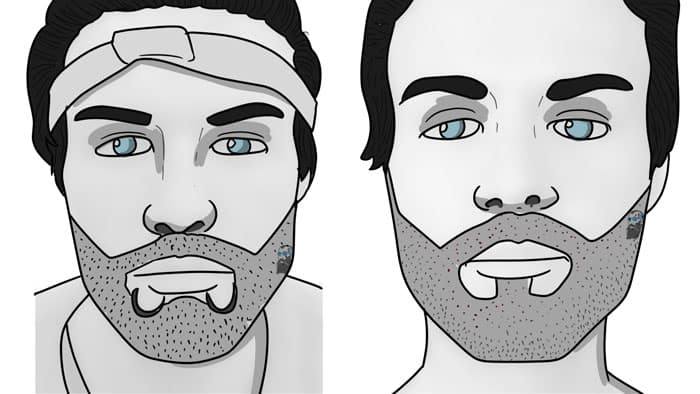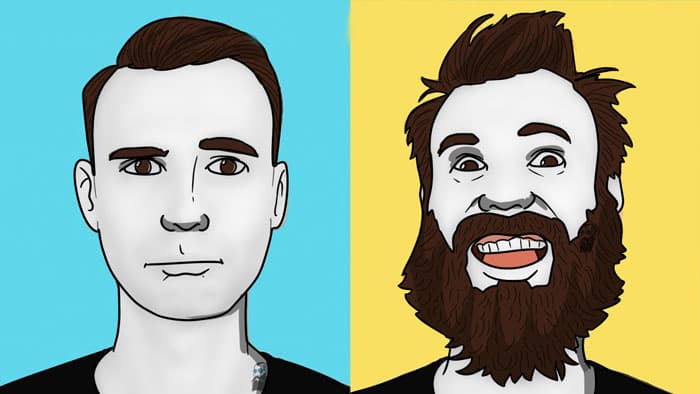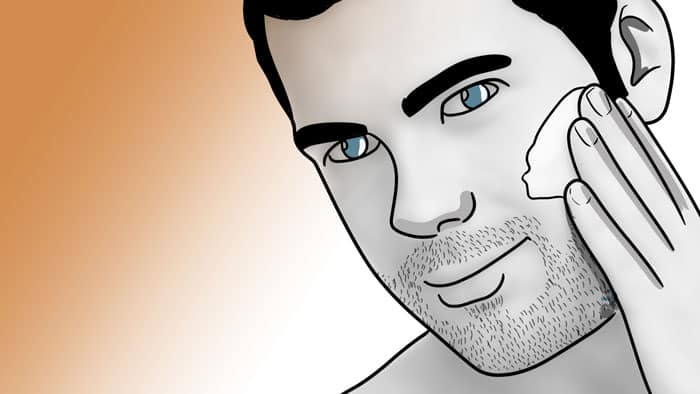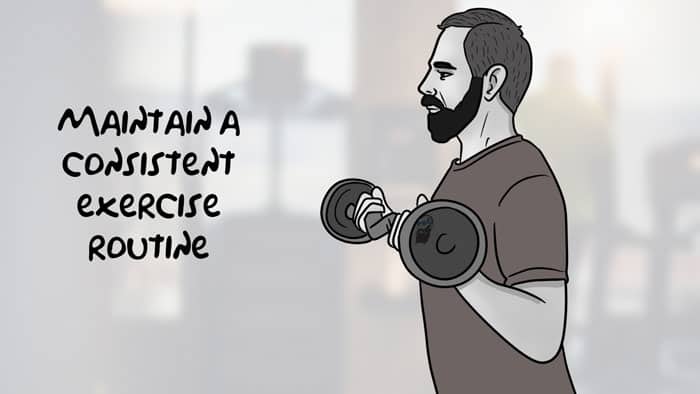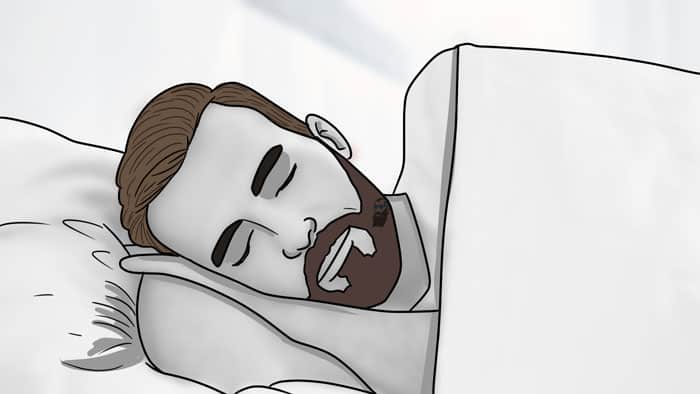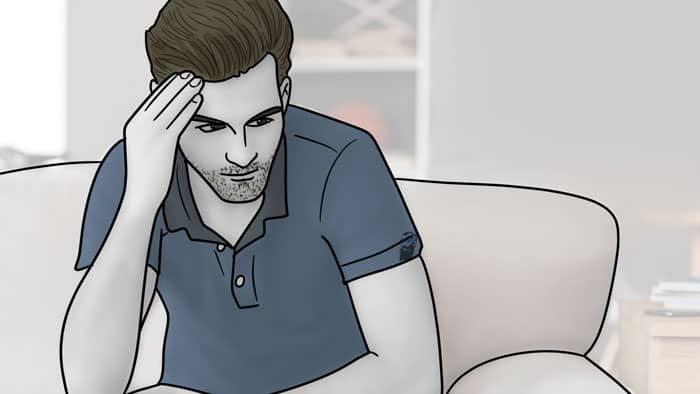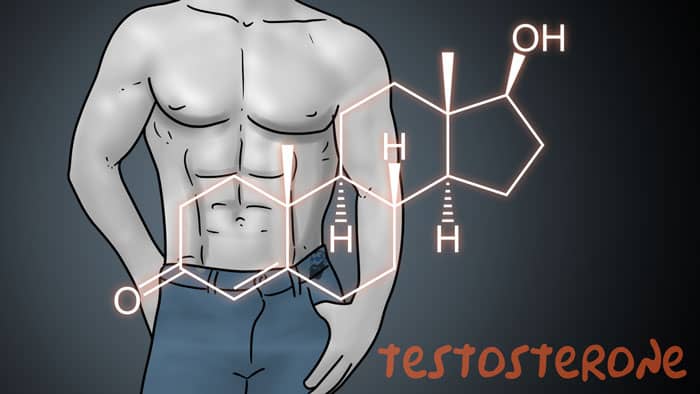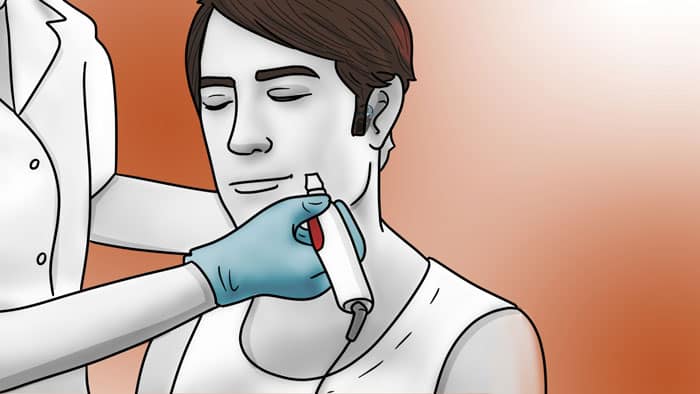Can’t Grow a Beard? You Can – With These 13 Methods
This post may contain affiliate links. Learn more.

Not all roads that lead to a great beard are free of obstacles. While some men experience the smoothest of journeys along the way, others aren’t so lucky.
If you’re convinced you can’t grow a beard or find yourself asking, “why can’t I grow a beard?” this post is for you.
We’ll discuss 13 methods for growing a beard, not only when all hope seems lost, but also when you experience patchiness and other issues that keep your beard from realizing its true potential.
We’ll cover a lot of ground along the way, and hopefully, help you to stay on course without picking up your razor in frustration.
1. Grow a better beard with Spectral.BRD and Minoxidil
A good place to start on your path leading to a full beard is Spectral.BRD and minoxidil, which deliver proven results backed by science.
Spectral.BRD
DS Laboratories is an innovative company with a strong focus on the science of hair growth, and one of their featured products is Spectral.BRD. It’s a potent, effective serum that helps beard grow thicker while reducing patchiness.
Spectral.BRD has several key ingredients, not the least of which is nanoxidil. Nanoxidil and minoxidil, which we’ll delve into it a bit, are very similar but have different molecular structures.
In short, nanoxidil has a greater molecular weight than minoxidil – which helps it to absorb better in the skin.
Another key difference is that nanoxidil doesn’t have the same side effects as minoxidil (which, again, we’ll discuss in a bit).
It’s also important to note DS Labs’ unique nanosome delivery system, which helps key ingredients penetrate deeply into the skin.
Spectral. BRD’s ingredients are encapsulated in nano-sized liposomes and delivered into the skin underneath the beard while allowing for a continuous release of them for longer-lasting results.
Spectral.BRD has a long list of ingredients – including nanoxidil – that help users to grow a thicker beard without the patchiness that keeps beards from reaching their full potential:
- Adenosine
Among adenosine’s many benefits is that it increases anagen hair growth while also increasing hair shaft diameter. Adenosine increases thymidine uptake, which helps induce hair follicle development.
- Biotin
Biotin is an important ingredient found in many hair growth products. A biotin deficiency can lead to alopecia – the loss of hair in some or all areas of the body. A daily biotin supplement can increase hair growth and thickness within three months after taking it.
- Caffeine
Caffeine extract counteracts protein that suppresses the growth and division of hair cells while stimulating facial hair growth.
- Piroctone olamine
Piroctone olamine increases the amount of hair in the anagen phase. The majority of people who use piroctone olamine report thicker hair.
- Castor oil
A key component of castor oil is the omega-9 unsaturated fatty acid ricinoleic acid, which restores moisture in the hair.
- Hyaluronic acid
A key benefit of hyaluronic acid is that it adds moisture to a dry scalp and hair. It can also increase the diameter of hair follicles.
- Copper peptides
Copper peptides stimulate hair growth, increase hair follicle size, and help reduce hair loss. They even help improve the success of hair transplants, another method for beard growth that we’ll discuss in this article.
- Nicotinic acid
Also known as niacinamide, nicotinic acid is a type of vitamin B3 that improves the quality of existing hair shafts while also increasing their density. It also aids the synthesis of keratin, a key component of human hair.
More good news: Spectral.BRD is easy to use.
You apply six to eight drops of it on the affected area of your face (where patchiness is more prevalent) and massage it in until it’s distributed evenly.
You don’t have to rinse it after application, and you can apply it twice a day.
Minoxidil
Minoxidil, or Rogaine, as it’s commonly known, is approved by the FDA as a hair-growth product – even though scientists still aren’t 100% sure how it works to stimulate that growth.
Minoxidil was initially used to treat high blood pressure – and still is – and belongs to a class of drugs known as vasodilators.
A side effect of minoxidil is that it causes hair growth, which wasn’t necessarily a bad thing for men who first used it to treat their blood pressure issues.
By 1988, minoxidil became the first drug approved by the FDA for hair growth and is backed by several studies that demonstrate its effectiveness.
How does it work?
Again, scientists don’t know exactly what minoxidil does to promote hair growth on the beard and scalp. In the most fundamental sense, it works by prolonging the anagen (growth stage) phase of hair growth.
We’ll talk about the hair growth cycle later, and it’s an important topic for why can’t some men grow beards.
Minoxidil is also a potassium channel opener that stimulates blood circulation to hair follicles. In turn, more nutrients and hormones reach hair roots, which helps hair grow faster and more thickly.
Another way in which minoxidil may aid hair growth is that it works with the immune system by stimulating an enzyme called prostaglandin synthase-1. And hair loss, in general, appears to have a strong connection with the immune system.
Minoxidil doesn’t stimulate hair growth on your beard as it does on the scalp. If your beard is patchy or thin, you aren’t “balding” in the same way men bald on their heads. Instead, minoxidil works to stimulate hair follicles already on your face.
- Minoxidil liquid and minoxidil foam
Rogaine comes in two forms – liquid and foam.
Rogaine liquid is the original form of minoxidil. It’s doesn’t cost as much as minoxidil foam, but it takes longer to dry.
But the biggest difference between Rogaine liquid and foam is that the liquid contains propylene glycol, which helps aid the transportation of minoxidil’s ingredients past the skin’s surface.
Propylene glycol also helps to ensure that minoxidil is evenly distributed over the areas of the beard affected by patchiness.
The only downside of propylene glycol is that it’s a skin irritant to some users. But it plays an important role in helping minoxidil work.
Most men typically use Rogaine liquid with a 5% or 2% minoxidil concentration. The stronger the concentration, the greater the potential for experiencing positive results – for most men, that is.
Studies have shown that the 5% concentration can stimulate up to 50% more hair growth, although results may vary for each individual.
Applying Rogaine liquid isn’t hard at all:
- Cleanse your face thoroughly before applying the liquid, preferably with a quality face wash or cleanser such as the Ursa Major Fantastic Face Wash.
- Apply liquid Rogaine to the affected areas of your face and beard. A typical application consists of 1 ml of liquid.
- Leave the liquid on your face for about four hours to allow it to absorb into the skin. You can apply it before you go to bed to make sure that you leave it on long enough.
- Rinse or wash your face after you’ve left the liquid on for at least four hours.
- Use a moisturizer on your face to reduce dryness and skin irritation. One product we really like is Brickell’s Daily Moisturizer for men.
Rogaine foam costs more than minoxidil but produces the same results (some users say it works better than liquid). It doesn’t include propylene glycol, which can cause skin irritation, but it doesn’t absorb in the skin as effectively as Rogaine liquid.
Deciding between Rogaine foam and liquid is a matter of personal preference because they produce very similar results.
Applying minoxidil foam is very similar to applying liquid minoxidil:
- Wash your face with a cleanser or wash designed for the job, and not bar soap.
- Rinse your hands and fingers with cold water. The foam dissolves too quickly if your hands are too warm.
- Dispense the foam on your fingers – you’ll use the same amount (1 ml) as you do with liquid.
- Apply the foam evenly throughout your beard and skin until you’re used up all of it.
- Wash your hands thoroughly after you finish applying the foam.
Minoxidil side effects
Minoxidil, unlike Spectral.BRD, may cause side effects, including skin irritation, redness, and unwanted hair growth on other parts of the body. In more serious cases, users have experienced abnormal weight loss, swollen feet or hands, chest pains, and dizziness.
Most minoxidil users experience few – if any – side effects, however. Contact your physician immediately if you experience a more serious reaction.
2. The hair transplant solution
Sadly, some men never reach their beard potential. Because of their genetics, or medical issues, those men can only grow a patchy beard at best. If you’re among them, we feel your frustration.
But not all hope is lost thanks to beard transplants.
A beard transplant is an excellent option when you’ve exhausted the possibilities, including everything we mention here – from minoxidil to exercise to diet.
It involves taking hair from another part of the body, usually from the back of the scalp, and transplanting it to the face where a beard or mustache would otherwise grow.
The good news is that most men who have a beard transplant are well-pleased with the results, i.e., they finally get the full beard they’ve long sought, and it doesn’t look contrived. Here’s a closer look:
Matching the hair
The hair typically comes from the back of the scalp because it’s hair that most closely resembles facial hair than on other areas of the body.
Match your beard to the color of the hair on your head. This can be done by either letting your beard grow out naturally, or dyeing it. Just make sure to choose a permanent dye that matches the color of your hair so it doesn’t look obvious that you dyed it. You should also consider using a facial bleach if you have darker beard hair and lighter scalp hair.
Wearing a matching beard and hair is a great look. It helps to bring attention to your facial features and makes you look more intimidating. As the saying goes, “A man with a beard looks like he can start a fight in an empty room!” If you want to match your beard and hair, there are several things that you can do.
The type of beard transplants
There two major types of beard transplants are Follicular Unit Extraction (FUE) and Follicular Unit Transplantation (FUT).
In an FUE procedure, the surgeon takes individual hairs from the donor area and transplants them to the face. It’s the most common beard transplant and leaves behind barely-noticeable small white scars.
The FUT transplant involves taking a small strip of tissue from the donor region with a microscopic dissection process. The strip is transplanted to the beard area. The surgeon closes the small wound on the donor area, leaving a single, small scar behind.
There are advantages and disadvantages to FUE and FUT procedures.
The FUE procedure doesn’t leave a linear scar, and the scars heal faster than with an FUT transplant. That’s important for aesthetic reasons, and also that it allows the patient to return to normal activities faster.
The scars left behind by the FUE procedure do cover a wider area, however, although they’re a bit harder to detect. Most patients experience little or no comfort during the FUE procedure.
The FUT procedure, in which a donor strip (rather than individual hair follicles) is extracted, harvests a greater amount of hair. In turn, this may make it easier to achieve maximum beard thickness.
The advantages of getting a beard transplant
The major advantage of a beard transplant is that it makes it possible for men who experience thin and patchy beards, often because of their genetics, to grow a full beard.
The advantage of getting a beard transplant is that it gives you a permanent solution to your facial hair dilemma. While some may be bothered by the fact that their beard doesn’t grow as fast or as full as their friends’ beards, most don’t feel like they need to do something about it. A beard transplant can help them achieve the look they want without having to spend too much time on it.
With this procedure, you can expect a full and consistent result. You won’t have to wait for a few months or even years until you see results from your hard work. Within a week, you’ll already start noticing new growth in your beard area. Your beard will continue to grow and fill out over the next year or two, depending on how well you take care of it after your surgery.
Other advantages include that the recipient will not only get a full beard but one that looks realistic and natural-looking – especially if it’s done by a skillful surgeon. You’ll also have the freedom to choose the style of beard you prefer.
Disadvantages of a beard transplant
What’s the major drawback of getting a beard transplant? The cost.
Beard transplants may cost $7,000 or more, and even twice that depending on the surgeon’s skill and experience.
A clinic may charge on a per session basis – it may take more than one session to complete the transplant – or on price per graft basis.
Some clinics may also charge a consultation fee before the transplant; the consultation may cost as much as $300, although it’s usually less than that.
Another potential disadvantage is that it’s not necessarily easy to match the hair from the back of your head to your natural facial hair because the structure of the two types of hair is slightly different.
Be wary of clinics that offer transplants for significantly less, however. Do your research to evaluate them thoroughly and read reviews from any men who’ve had a transplant by those clinics.
Side effects
Some men experience mild side effects after undergoing a beard transplant, although nothing too serious. Those effects include swelling in the donor region, mild bruising, ingrown hair, increased sensitivity at the donor and recipient sites, and redness.
Most beard transplant patients are able to resume shaving within 10 days of their procedure.
3. Give your beard the gift of time
Growing a beard often requires some patience. While some men grow facial hair at a faster rate than others – thanks to genetics, for example – you should view time as your ally without stressing over whether it will ever come in as you wish.
You may fret when your beard comes in patchy at the start, and you’re not alone. But maybe it’s not really “patchy,” but instead, it just needs more time to grow properly.
Our advice is to give yourself at least four weeks before you start to judge your beard (or judge it harshly). Even then, if it’s still looking a bit ragged, resist the temptation to shave it off.
During the first four weeks, you’ll experience many different things, from an itchy beard (weeks 1 and 2) to a beard that’s starting to look like something (week 3), to a beard that’s either fully grown or well on its way (week 4).
Remember, growing a kick-ass beard requires the same type of commitment needed to lose weight, develop a killer body, or to earn an advanced degree.
It won’t happen overnight, but all you need to do is to stay the course and accept the peaks and valleys along the way.
4. Help your beard grow by taking care of the skin underneath
Your beard isn’t just about the visual evidence, i.e., whiskers, on your face. It’s also about the skin underneath, the very foundation from which your beard grows.
There’s no getting around it: You have to take care of your facial skin if you hope to grow a beard that realizes its true potential.
Don’t ignore the skin because it’s obscured by your beard. It faces a lot of challenges, including from conditions created by beard growth and external factors such as the weather.
One obstacle many beardsmen face is dry skin under their beard. Dry skin can occur for a multitude of reasons, not the least of which is that beard follicles deplete the natural oils of your face faster than if you had no beard hair at all.
But hot showers, excess humidity, and other factors can make your skin dry and create irritating conditions such as itching and beardruff, the facial hair equivalent of dandruff.
Here’s something else to consider: You still have to protect the skin from sunburn even when it’s covered with beard hair.
The sun’s UVA rays can still penetrate the skin underneath the beard and cause sunburn. A beard does protect the skin from UVB rays, but UVA rays are more damaging to the skin.
Let’s look at ways in which you can keep your skin healthy while improving your chances of growing the kind of beard you desire.
Moisturizing
Keeping your facial skin properly hydrated, as mentioned, prevents dry skin, itching, flaking, and irritation.
Beard itch is a common issue many men face in the early stages of beard growth, and it may become so aggravating that some feel the only solution is to shave off their beard.
Moisturizing your beard can prevent and eliminate the issues of dry skin, however, and the best moisturizer you can buy is beard oil.
Beard oil consists of oils such as jojoba, argan, and coconut, which all help to ensure that essential oils reach the skin, as well as hair roots and follicles.
We talk a lot about beard oil in our Balding Beards articles, and with good reason.
You should always have a bottle, or two, of it around if you’re serious about growing a beard.
Essential oils found in beard oil, such as lavender, rosemary, cedarwood, and tea tree oil, help lubricate the skin, soften beard hair, and make it more manageable.
There are many high-quality beard oils from which to choose – one we really like is Honest Amish’s Classic Beard Oil – but be careful to choose only those with all-natural ingredients.
Use a high-quality beard comb such as Kent’s Handmade Comb to spread the oil evenly throughout the beard.
You may pay a bit more for the best beard oils, but they’re a worthy investment. Your beard will look good and be more manageable while your skin will stay moisturized and feel great. Apply beard oil and other moisturizers at least once a day.
Washing your beard
Consistently washing your beard – but only once or twice a week – is good for hair follicles and the skin underneath.
Using a quality beard wash or shampoo, such as Professor Fuzzworthy’s Beard Shampoo, offers many benefits, including that it keeps your beard soft and manageable without drying it out.
We always recommend using beard shampoos and washes consisting of natural ingredients that won’t damage beard follicles or dry out the skin.
Even then, you shouldn’t wash your beard too often because you can strip your skin’s natural oils that are essential to a healthy beard.
You may wonder if it’s OK to use the same shampoo you use on your scalp for your beard. It’s not.
Most mass-manufactured shampoos are designed to get rid of dirt and oil that leaves hair greasy and dirty. It also can strip away sebum that helps to keep your hair moisturized properly. Nor should you use plain bar soap to wash your beard.
It’s best to wash your beard in the shower. Use your fingertips to work the wash or shampoo down to the skin. Continue to massage the skin as you rinse off the shampoo.
Water temperature is important, too; if you use water that’s too hot, you’ll likely strip away your skin’s natural oils, while water that’s too cold won’t wash away enough sebum and may lead to clogged pores.
Instead, wash with warm water that’s just above lukewarm.
Exfoliating
Exfoliation is a process by which you scrub away dead skin cells. Everyone sheds these cells daily during the natural skin renewal process.
But a build-up of excess skin cells, especially on the skin underneath the beard, can trap dirt and grime that can block pores. It can also leave your beard looking dull and lifeless.
A quality face scrub, however, serves as an exfoliator, and when used a few times a week (no more than three) offers many benefits to your skin and beard. It can even uproot irritating ingrown hair and help prevent an excess build-up of oil on the skin.
Be careful of using a face scrub or other type of exfoliator if you have sensitive, dry, or acne-prone skin. Use it no more than twice a week, if that, because you want to avoid over-drying the skin.
One product we recommend is Brickell Men’s Renewing Face Scrub, which is organic and provides deep exfoliation.
5. Brushing and combing your beard
You should brush and comb your beard if you want it to look great or to achieve a certain style. But brushing and combining have many other benefits, as well.
Brushing and combing your beard helps lift and loosen dead skin cells, while also keeping those cells and dry, flaky skin from appearing as beardruff.
When you brush or comb, you also distribute sebum oil evenly throughout the beard, which aids in the beard-growth process.
Combing your beard also helps keep the beard free of tangles and knots while helping those inevitable fly-aways lie flat. Your beard will look and feel better.
You can brush or comb your hair twice a day to keep it looking good and to aid the health of the skin underneath it.
What you don’t want to do is use a comb or brush you use on your scalp. There are many combs designed for the beard only – including Kent’s Handmade Comb – as well as brushes, particularly boar’s hair brushes.
Check out Rocky Mountain Barber Company’s Boar Hair Beard Brush if you’re in the market for a top-notch brush.
6. Taking supplements and the biotin beard
Don’t hesitate to use everything at your disposal when growing a beard – within reason, of course. Beard supplements are certainly within reason, and many men have experienced positive results from taking them during the beard growth process.
While supplements may not generate new hair growth, they’ll help soften and thicken the hair that’s already there, while also prompting your whiskers to grow faster.
There have been studies that prove the positive effects of supplements on beard growth through the use of beard supplements.
An important vitamin found in beard growth supplements is biotin, a B vitamin (also known as vitamin H), which is naturally found in a number of foods, including eggs, bananas, and nuts.
A biotin deficiency can lead to thinning hair, while it can improve the body’s supply of keratin – a basic protein that makes up skin, hair, and nails.
The recommended daily dose of biotin to strengthen hair shafts is 2.5 mg. Taking too much of it may lead to skin rashes, high blood sugar, as well as kidney and digestive issues. However, it is water-soluble, meaning that it’s excreted through the urine and feces.
Other vitamins – including copper, zinc, magnesium, iron, vitamin D, and vitamin E – can also enhance beard growth. Vitamin D, for one, is said to activate dormant hair follicles.
7. Watch what you eat and watch your beard grow
In this section, we’ll talk about the importance of a healthy diet regarding beard growth. In the next, we’ll discuss exercise.
Yes, diet and exercise – those things that we’re strongly advised to do by health experts to promote better overall health in ourselves and others. By better overall health, we include better beard growth, as well, because there’s definitely a connection.
We’ve discussed supplements and how they can enhance beard growth, but a healthy diet can ensure that you’ll get the sufficient amounts and types of vitamins and nutrients your body – and beard – need.
For some people, the thought of a “healthy” diet means eating lots of foods they don’t like, but there’s a wide variety of foods from which to choose.
That means you don’t have to eat the same thing over and over and that you can try a variety of dishes and recipes that qualify as healthy.
While you may have to wean yourself off of junk food and some of your other favorites foods, you’ll be better off for it in the long run. Men who eat healthy foods lose more weight than men who don’t – not a big surprise – and maintain a healthier weight more easily.
Plus, losing weight helps to boost testosterone, which, in turn, helps to boost beard growth. Here are some types of foods that can help you grow a full beard:
Protein-rich foods
Protein is a great source of keratin and hair contains keratin, a type of protein that’s rich in amino acids. Your diet is the primary source of keratin, and you’ll find it in foods such as fish, lean meat, eggs, rice, beans, legumes, and poultry.
Foods that are sources of vitamin A and Beta A Carotene
Vitamin A and Beta A carotene help to repair skin tissue, which leads to better hair growth. Carrots, egg yolks, kale, spinach, and sweet potatoes are all good sources of vitamin A and Beta A carotene.
Foods rich in vitamin C and E
Vitamins C and E boost the body’s production of sebum, the natural oil that lubricates and moisturizes hair. Citrus fruits are a great source of vitamin C, while green peppers, broccoli, almonds, peanut butter, spinach, and sunflowers seeds are also rich with C and E.
Omega-3 fatty acids
Omega-3 is a type of fat that’s also beneficial to hair growth, including in that protects cell membranes that keep your beard from becoming dry and brittle. Omega-3 fatty acids are prevalent in salmon and other types of fatty fish, as well as in flaxseed oil and walnuts.
Foods that are sources of vitamins B6, B12, and biotin
B vitamins offer many benefits for hair growth and for the production of new skin cells, as well as help the body to synthesize protein – which is crucial for healthy hair.
You’ll find B vitamins and biotin in foods such as poultry, nuts, fish, eggs, brown rice, oatmeal, and wheat germs.
Drink. More. Water.
Maintaining proper hydration is important for many reasons, including that it keeps the skin beneath your beard healthy and hydrated.
How much water you should drink each day depends on factors such as your activity level and the type of climate where you live, but the recommended amount for men is about 13 cups per day – or about 3 liters.
8. Maintain a consistent exercise routine to grow a better beard
Exercise has many benefits for your body and mind, including that it can help you to stave off excess weight gain and the many health issues that come with it. But it also boosts testosterone, and testosterone is important to the beard-growing process.
Working out regularly helps beard growth in a couple of other ways, as well, including that it boosts metabolism, and it triggers bodily recovery – which helps to replenish the hair and skin.
Moreover, the sweating that occurs as you exercise helps to clean your skin’s pores of grime, dead skin, and toxins that affect your overall health, but also the health of the skin underneath your beard.
Exercising also increases circulation throughout your body, including your face. Better circulation helps your body to absorb nutrients and oxygen more effectively. And, an enhanced circulation can stimulate beard growth.
Mind you; a gym membership isn’t a requirement if you want to amp up your daily exercise. You’ll also want to choose a type of exercise or workout routine that you find enjoyable; the more you enjoy it, the longer you’ll stick with it.
If you’re already a gym member, you can mix things up by trying a new class or by working with a fitness instructor.
9. The important role of sleep for beard growth
Everyone knows what it feels like to wake up without a good night’s rest. You’re tired, groggy, grumpy, and, perhaps, in for a long, weary day.
Many studies how important a good night’s rest is for maintaining personal health and well-being – both body and mind – and that includes your beard.
A lack of sleep leads to excess stress, which can inhibit beard growth, as well as reduced testosterone levels. As we’ve discussed, lowered testosterone levels can lead to a patchy beard or one that never realizes its full potential.
One study by the Journal of the American Medical Association showed that a week’s worth of sleep deprivation leads to a 10 to 15% decrease in testosterone levels. The JAMA defines sleep deprivation as not getting more than five hours of sleep per night.
Although the amount of sleep a person needs may vary by individual, the general rule of thumb is that most people need eight hours of undisturbed sleep each night. But the amount varies depending on factors such as age, sex, lifestyle, etc.
In general, your body needs more rest/sleep as you get older.
10. Reduce stress, admire your beard
Most of us face stress every day, some perhaps more than others. We also react in different ways to stress, but the bottom line is that stress – no matter how often or what form – can wreak havoc with our mental and physical lives.
Too much stress can lead to a variety of health issues, such as heart disease, anxiety, and depression, but it can also wreck your best-laid beard plans. Stress increases the production of cortisol, a powerful hormone associated with the fight or flight response.
In turn, too much cortisol can reduce testosterone production, which is essential to beard growth. Excess stress, caused by too much cortisol, also constricts blood vessels while restricting the proper flow of vitamins and other nutrients to hair follicles.
Not that cortisol is all bad, because it’s essential to a long list of necessary functions, including that it reduces inflammation, regulates your blood pressure, helps to control the sleep/wake cycle, and manages how the body uses proteins, fats, and carbohydrates.
But too much cortisol, often caused by stress, isn’t healthy. And it can affect your beard’s growth.
So, practice stress-relieving activities whenever possible, whether it’s through exercise, meditation, taking short breaks during a particularly-hectic day, or activities such as listening to music that helps calm you.
11. Hormone therapy and the quest for a better beard
We’ve already talked a lot about the role of testosterone and how a lack of it can negatively affect your efforts to grow a full beard. You may have lower testosterone levels than the next guy, or your testosterone is low because you’re getting older.
If so, one option you may consider is hormone therapy. Better known as Testosterone Replacement Therapy, hormone therapy can help revive facial hair a deficiency of male hormones is the underlying cause of patchiness and thinness.
Hormone therapy comes in a variety of forms, including injections, tablets, capsules, and hormonal cream.
It’s said to benefit or may benefit men with low levels of testosterone, although there’s some debate whether it can help men whose decrease in testosterone is because of aging.
Hormone therapy isn’t without risks. It may lead to minor side effects such as fluid retention, acne, and increased urination.
Among more serious risks are increased cholesterol levels, decreased sperm count, infertility, a worsening of sleep apnea, and an increased number of red blood cells.
Your physician can help you decide whether hormone therapy is right for you.
12. Microneedle your way to a better beard
Another method used for stimulating beard growth is microneedling, which involves pricking the face with hundreds of tiny needles. Sounds painful, right? In fact, most users say the process is painless.
When you roll the needles over your face, they create tiny punctures in the skin. The body recognizes the “damage” and begins the healing process. This increases blood circulation to the affected areas, and more hormone-rich blood rushes to those spots.
In short, the process creates a healthier base upon which facial hair can grow.
A 2013 study showed that microneedles also help to activate stem-cell growth factors. The study also suggests that using a microneedle roller in conjunction with minoxidil can help kick-start facial hair growth.
The microneedles are connected to a roller that you apply to the skin beneath your beard. There are many quality microneedle devices available, including the StimuROLLER Face by DS Laboratories.
If you’d like to combine microneedle and minoxidil treatments, continue to use minoxidil twice a day except for one day in which you use the microneedle roller instead. Wait 24 hours after your microneedle treatment before resuming minoxidil applications.
Microneedles consist of two types of material: titanium and stainless steel. Titanium needles typically cost more but seem to be more effective and durable than stainless steel.
You don’t need to apply a lot of pressure for the microneedle treatment to be effective. The needles will puncture the skin with not much pressure, and just because you don’t feel some discomfort doesn’t mean they aren’t working.
Don’t use a microneedle roller if you have acne, because it will spread bacteria that can make the problem worse. It’s also recommended that men with psoriasis and eczema shouldn’t use microneedles.
13. Trimming your beard as you grow it
Trimming your beard as it grows is important if you want it to look its best, especially if you’re in it for the long haul. It also aids your beard’s health by preventing split ends, flyaways, and dryness.
Keeping your beard well-trimmed won’t impede the growth progress, either. And needing to trim it is good news because that shows it’s growing and thriving.
Most men prefer to define their cheek line and trim their neckline to keep their beard looking its best. You’ll get the best results if you use the right tools, including a top-notch beard trimmer. The Remington MB6850 trimmer is among those we really like.
Your beard-trimming kit should also include a good pair of beard and mustache scissors. Tweezerman GEAR Moustache Scissors are a good option.
Aging and beard growth
It stands to reason that the beard you grow at age 30 is different from the one you try to grow in your late teens and early twenties. You probably remember the kid in high school who – due mostly to genetics – already had a thick patch of whiskers.
He was an exception to the rule, however, and the “rule” is this:
A man’s beard tends to get thicker as he ages.
Then again, the ability, and timetable for, growing a beard varies from man to man. Men mature at different rates, which impacts facial hair growth, among many other things.
· Puberty
Adolescence is a time of many changes for many young men, and at the ages of 11 to 15, the first facial hair tends to grow at the corners of the upper lip. It then spread to form a mustache over the entire lip around the ages of 16 and 17.
Many younger men also notice new hair on the upper part of their cheeks and the area under the lower lip.
This growth will eventually spread to the sides and lower border of the chin – and the rest of the lower face – and, in some cases (usually between the ages of 17 to 21), it sprouts into a full beard.
· Teens and twenties
You’re mostly at the mercy of the hand nature dealt you when it comes to facial hair in adolescence and early adulthood. And it’s a grab bag as to what kind of growth you’ll experience.
Your mustache may consist of peach fuzz and look as if you forgot to wash away a thin layer of dirt above your upper lip.
Or, you may be the guy who already looked like a lumberjack before you were of legal drinking age (which in the US is 21). Or, your stubble may consist of a soft layer of whiskers that’s also quite patchy.
If you fall into the category of men who mature a bit more slowly, there’s no reason to get discouraged. There’s no need to compare yourself to others, but there’s every need to stay the course if you want to be a true beardsman one day.
· Early 20s
You may notice a distinct change in the ability to grow a full-fledged beard around the ages of 22 and 23. Then again, you may already have a full beard by then, thanks to genetics that are favorable to facial hair growth.
· 25 to 35
The period between the ages of 25 to 35 is often referred to as the “prime” period of beard growth. This is when most men will experience the healthy growth of their beard and mustache.
Some may have to wait until they’re almost 30 before they realize their full beard growth potential.
Your beard will continue to get thicker until around age 35 or perhaps a bit beyond. You may even notice facial hair growth in places you may not have expected, like your nose, eyebrows, and ears.
· 35 and up
Again, there are no definitives when growing a beard; you may or may not have a decent beard, you may experience significant growth from 25 to 35, or you may still have a patchy beard after age 35. You can thank, for the most part, your genetics for that.
In general, the rate of beard growth slows as men age but, then again, some men experience their first true full beard in their 40s and early 50s. It all depends. And we all know older men with full – albeit a bit gray – beards in their 60s and beyond.
A quick word about the hair growth cycle
We referred to the phases of hair growth several times in the course of this article. Put simply; three hair growth cycles affect every man – anagen, catagen, and telogen.
Anagen
Anagen is the growth phase of the cycle in which hair grows approximately 1-inch per month. Many beard and hair growth products work, in part, by putting more hair follicles in the anagen phase, or by prolonging it.
Catagen
The catagen phase marks the end of anagen. The blood supply to hair follicles decreases and eventually stops.
Telogen
This is the phase in which hair follicles die and eventually fall off.
The length of each phase isn’t the same for everyone. Men who experience a shorter anagen phase will have more trouble growing hair on the face and scalp. Testosterone – which varies from man to man – plays an important role in hair growth.
Interestingly, men with higher levels of testosterone have a better chance of growing a thicker, less-patchy beard, but may lose scalp hair at a much faster rate than men with lower levels.
How long does it take to grow a beard?
The average growth rate for facial hair is about a half-inch per month. That’s the average, however, and several factors, including your genetics, age, and race, impact how fast your beard grows.
Most men need around two to four months to grow a full beard. But that’s not etched in stone.
Conclusion
There shouldn’t be much in the way if you want to grow a full beard or the beard style you desire. How your beard grows is different from many other men, but you’ll get where you want to go with the various methods we describe above.
Above all, have patience. It may take time to grow the beard you want, but we think it’s worth the wait.
What’s your experience with growing a beard? What things have helped? We’d love to hear from you and welcome your comments and feedback.

